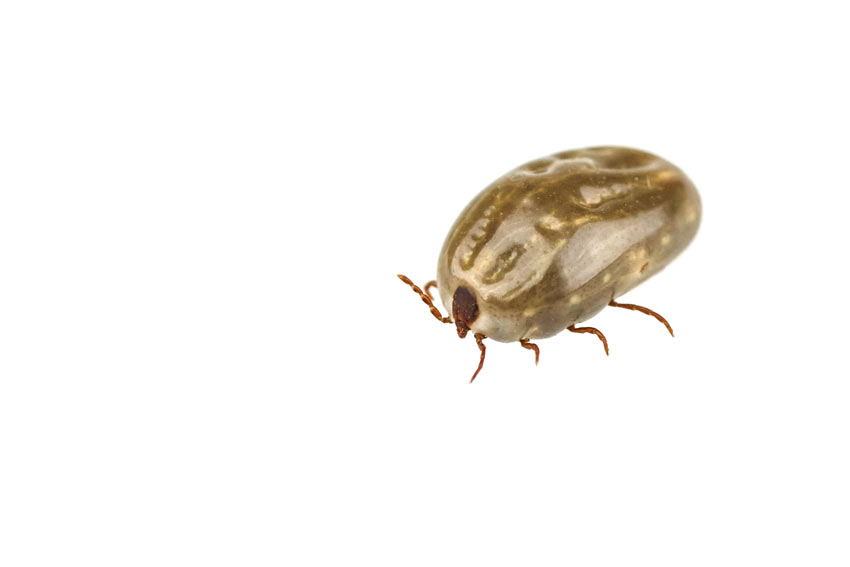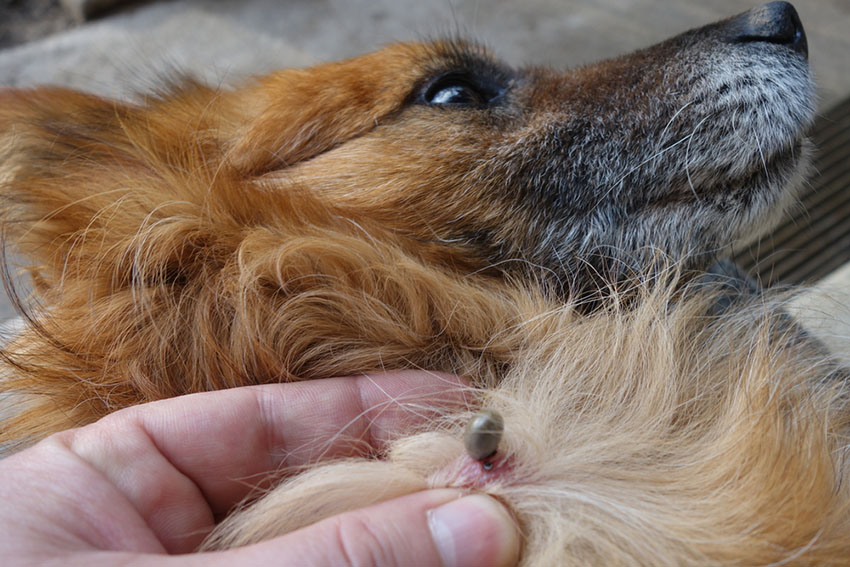Ticks are nasty little blood sucking parasites, and look every bit as unpleasant as they sound. They burrow their heads into the skin of warm blooded animals and feast away like the mini vampires they are. They spread diseases and can go undetected for a long time, so it’s important to stay vigilant, on behalf of both yourself and your dog.
Ticks are usually found near farms and woodland areas, particularly where there are wild deer. It is best to avoid walking your dog near areas that you suspect might contain ticks, as the parasites can transmit very serious and potentially life-threatening diseases, such as Lyme Disease.

Know your enemy - A close up of a tick
If you notice that your dog has a tick, it is vital that you use a tick remover provided by your vet. Do not attempt to burn it off as this can provoke the tick to release its stomach contents into your dog’s bloodstream; and if you try to prise it off it will leave its mouthparts behind, which can cause bad infection.
So, once you have removed the tick make sure you haven't left its mouthparts embedded in your dog’s skin, and then use a mild dog antiseptic, or iodine, to clean around the area. Get in touch with your vet if you notice any irritation, pain or swelling, limpness, or a change in your dog’s behavior, as these could all be signs of infection.
How To Apply Tick Treatment To Your Dog
Tick prevention medication is usually included in flea treatment. Apply the contact treatment to your dog’s skin along his back as well as above and below his collar. You don’t want to apply tick treatment to areas of your dog’s coat where he can reach, otherwise he might lick it off and the medication will not do its job. Tick treatment is not absorbed by dog hair, so make sure that you apply it to your dog’s skin instead. Avoid rubbing in the treatment as this will prevent your dog from getting the correct dosage.

This engorged dog ticks need removing
Your vet will provide you with the correct dosage for your dog’s size and weight. They will also tell you how much treatment you should apply at a time and how often you should apply it, as well as any further information you might need about how to apply a particular tick prevention product.
Flea and tick collars are available. They last around 7-8 months – speak to your vet for details.




Comments
There are no comments just yet